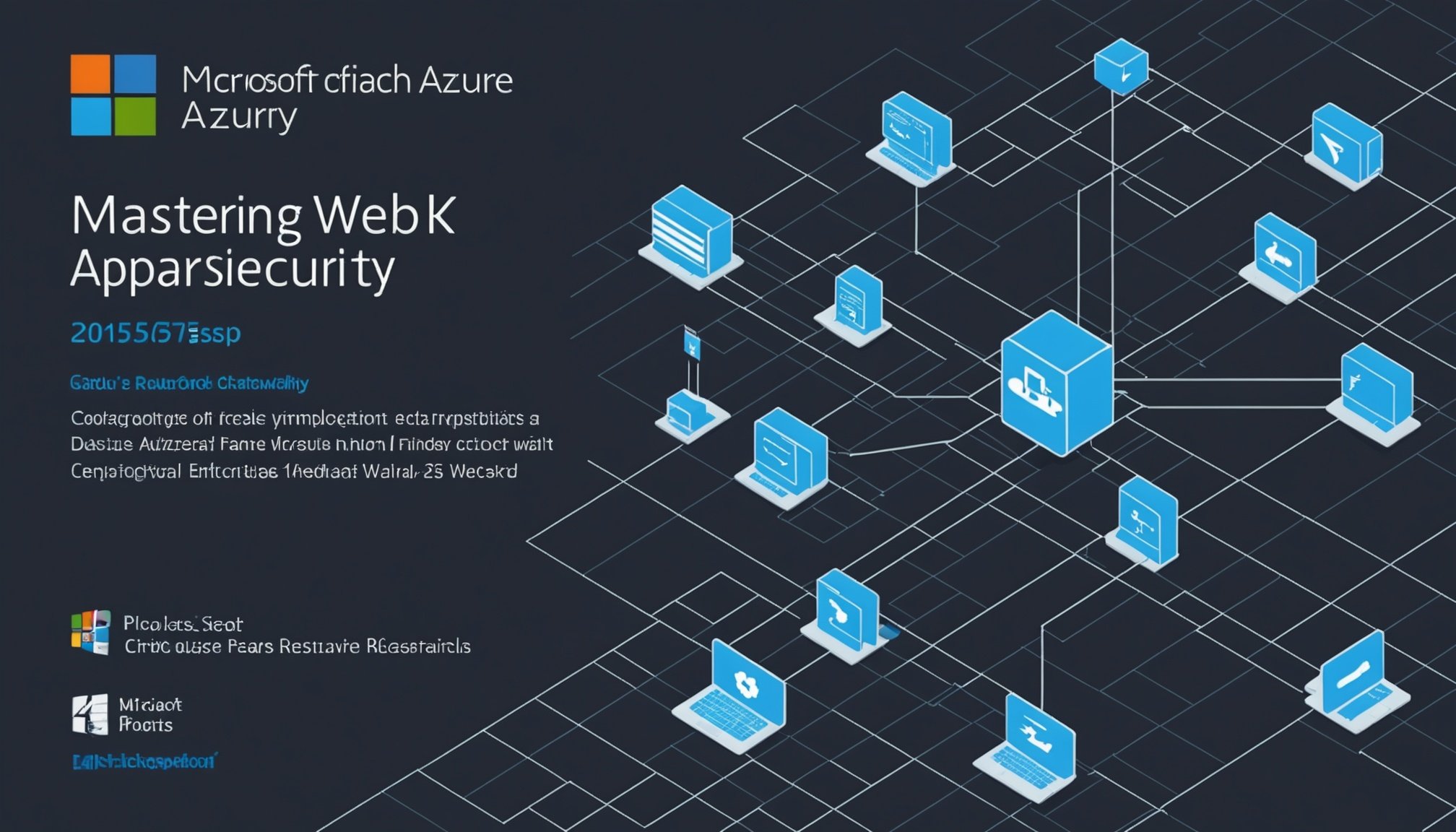Overview of Microsoft Azure Application Gateway
In today’s digital landscape, the Microsoft Azure Application Gateway plays a pivotal role in enhancing web application security. This service acts as a web traffic load balancer that manages and forwards incoming traffic to various back-end servers based on configured rules. This approach ensures a seamless and secure user experience by distributing incoming traffic efficiently.
One of the key features of the Azure Application Gateway is its Web Application Firewall (WAF), which offers robust protection against common vulnerabilities and threats such as SQL injection and cross-site scripting. By implementing these advanced security measures, Azure Application Gateway significantly diminishes the risk of attacks, safeguarding sensitive data.
This might interest you : Step-by-Step Guide to Setting Up a Resilient RabbitMQ Cluster in Docker and Kubernetes
Moreover, the Application Gateway supports Secure Sockets Layer (SSL) termination, which offloads the decryption of SSL requests at the gateway, thereby enhancing application performance. This allows web application servers to focus on processing requests instead of decrypting data, optimizing overall system efficiency.
Incorporating Microsoft Azure Application Gateway into a modern web architecture is crucial for maintaining application security and reliability. By leveraging its rich set of features, businesses can ensure that their web applications remain secure, available, and responsive, meeting the demands of an ever-evolving technological environment.
Have you seen this : Mastering Cross-Region Replication in Amazon S3: A Step-by-Step Guide to Achieving Data Redundancy
Initial Setup of Microsoft Azure Application Gateway
Setting up an Azure Application Gateway can initially seem daunting, but it’s a systematic process greatly benefiting from understanding each component’s role. Start by creating a new instance: in the Azure portal, go to the Marketplace and search for “Application Gateway”. Once found, proceed to create, providing necessary details such as the resource group, region, and instance name. Make sure all information aligns with your organisational requirements.
After deploying the gateway, focus on the initial configuration. Key aspects include setting up routing rules and defining backend pools. Routing rules determine how incoming traffic will be directed, ensuring requests reach the correct backend. Meanwhile, backend pools should contain the IP addresses or fully qualified domain names of your application servers.
To enhance security during the setup, consider employing the following best practices:
- Enable HTTPS for encrypted communication between clients and the gateway.
- Implement Web Application Firewall (WAF) to protect against vulnerabilities.
- Regularly update security policies according to industry compliance standards.
By carefully considering these aspects, you can effectively configure a secure and robust Azure Application Gateway tailored to your operational needs.
Configuration Options for Azure Application Gateway
When configuring Azure Application Gateway, understanding its diverse options is crucial for optimizing web performance and security. These options range from HTTP settings to listeners, each with its specific role.
HTTP settings are integral to defining how the gateway behaves with incoming traffic. You can manipulate these settings to control session affinity and cookie handling, enhancing user experience by maintaining session states across requests. This capability is especially beneficial for applications demanding consistent connections.
Listeners are another significant component, defining how the gateway identifies traffic by binding protocols and ports. Through careful tweaking, you ensure traffic is correctly routed to intended backend servers, playing a pivotal role in network efficiency.
For advanced settings, customizing firewall rules is indispensable. Building robust security requires modifying firewall configurations to protect against threats like SQL injection and cross-site scripting. This customization ensures a resilient security posture tailored to specific application needs.
Additionally, adjusting settings to suit various web applications can improve performance. By aligning configurations with application requirements—whether they are static or dynamic—businesses can achieve optimal throughput and reliability.
Security Features of Azure Application Gateway
When it comes to security features, the Azure Web Application Firewall (WAF) stands as a formidable shield against online threats. This dynamic component provides round-the-clock protection by identifying and mitigating potential risks before they infiltrate the system. The WAF is adept at recognising and blocking common exploits that could compromise your application’s integrity.
One of the cornerstones of Azure’s security measures is the implementation of SSL termination. This feature ensures that data in transit is securely encrypted and decrypted at the gateway, safeguarding sensitive information from prying eyes. SSL termination not only enhances security but also boosts performance by offloading cryptographic operations from backend servers.
Furthermore, the Azure Application Gateway empowers users with robust security policies designed to address various threats efficiently. These policies allow administrators to tailor security rules according to their specific requirements, ensuring a proactive defence mechanism against vulnerabilities. The flexibility of modifying security policies means that you can quickly respond to evolving threats, maintaining the integrity and reliability of your applications.
Azure’s comprehensive approach integrates diverse strategies to fortify your applications, making it an indispensable tool in the modern digital landscape.
Common Pitfalls and Troubleshooting
When dealing with troubleshooting Azure Application Gateway, some frequent blunders can arise during configuration. One notable issue is misconfigured backend pools, leading to connectivity problems. Ensure backend servers are correctly added and have unique, non-overlapping IP addresses. Misallocation might result in failed connections, impacting performance.
Additionally, common configuration errors often include incorrect routing rules, which can cause routing requests to unintended destinations. Verify these rules meticulously to guarantee accurate routing to respective backends. Attention to Web Application Firewall (WAF) policies is also crucial, as overly restrictive WAF settings might block legitimate traffic, causing unforeseen downtimes.
A proactive approach to efficient troubleshooting involves thorough monitoring and logging. Azure’s monitoring tools, like Application Insights and Azure Monitor, provide valuable data on network requests and identify abnormal patterns. Logging can quickly pinpoint configuration errors, reducing downtime.
By leveraging these tools, administrators can anticipate and address potential issues more effectively, ensuring smooth operation. Thus, implementing consistent monitoring strategies and responsive troubleshooting techniques is crucial for maintaining optimal function and performance within your Azure Application Gateway environment.
Optimizing Performance with Azure Application Gateway
Enhancing performance optimization with Azure Application Gateway involves understanding key strategies for effective traffic management and load balancing. Azure’s features allow you to efficiently manage web traffic, ensuring seamless distribution across servers. This capability directly contributes to improved application response times, accommodating higher network loads with ease.
Scaling Azure Application Gateway for high availability is crucial. By implementing autoscaling features, you can adjust resources dynamically to meet demand, preventing bottlenecks and maintaining high availability and performance during peak times.
For a more comprehensive approach, integrating performance monitoring tools is essential. These tools offer real-time insights into your system’s state, allowing for proactive management. By continuously tracking performance data, you can quickly identify potential issues before they affect users, ensuring optimal operation and reliability.
Furthermore, adhering to best practices such as using rule-based routing and configuring SSL protocols enhances security while streamlining traffic flow. These practices not only improve performance optimization but also support a stable, secure network environment. By implementing these techniques, businesses can ensure their applications operate at peak efficiency on the Azure platform.
Integrating Azure Application Gateway with Other Azure Services
Integrating the Azure Application Gateway with other services amplifies its capabilities, enhancing both performance and security. By combining it with Azure CDN, websites benefit from faster content delivery through local caching, which minimizes latency and optimizes user experience. On the other hand, its integration with Application Insights enables comprehensive monitoring, offering in-depth analytics and diagnostics that aid in swift issue resolution.
To set up these integrations, begin in the Azure portal. For tying in Azure CDN, create a CDN profile and endpoint, then link it to your gateway. For Application Insights, simply enable diagnostics and connect it to your monitoring workspace. This integrated setup ensures efficient data flow and insightful analytics across your services.
Real-world examples highlight how these integrated solutions bolster web application security and performance. E-commerce sites leverage CDN for accelerated content delivery, while streaming services utilize Application Insights for consistent uptime and performance monitoring. These use cases showcase the value these integrations bring, ensuring robust, scalable, and secure web services.
Compliance Considerations for Web Applications
Navigating compliance in web application security is crucial for organisations managing sensitive data. Adhering to compliance standards like GDPR or HIPAA not only protects user information but also helps organisations avoid legal repercussions. These frameworks establish guidelines for data protection, ensuring that businesses minimise risks associated with data breaches.
Incorporating Azure compliance standards, firms can leverage Azure Application Gateway to improve their web applications’ security posture. Azure offers a range of tools to assist with compliance, including robust security features and automated monitoring to ensure compliance prerequisites are satisfied.
Implementing best practices involves maintaining thorough documentation and conducting regular audits. Documentation supports organisations in demonstrating their compliance efforts and mirrors an understanding of the necessary safeguards. Audits, whether internal or external, serve as a compliance verification method, identifying any security lapses or areas that require improvement.
Regular updates and patches are another critical component; they ensure that the security infrastructure remains aligned with the latest regulations. This proactive approach aids in consistently meeting compliance requirements, which ultimately fortifies an organisation’s reputation and trustworthiness in handling data responsibly.











